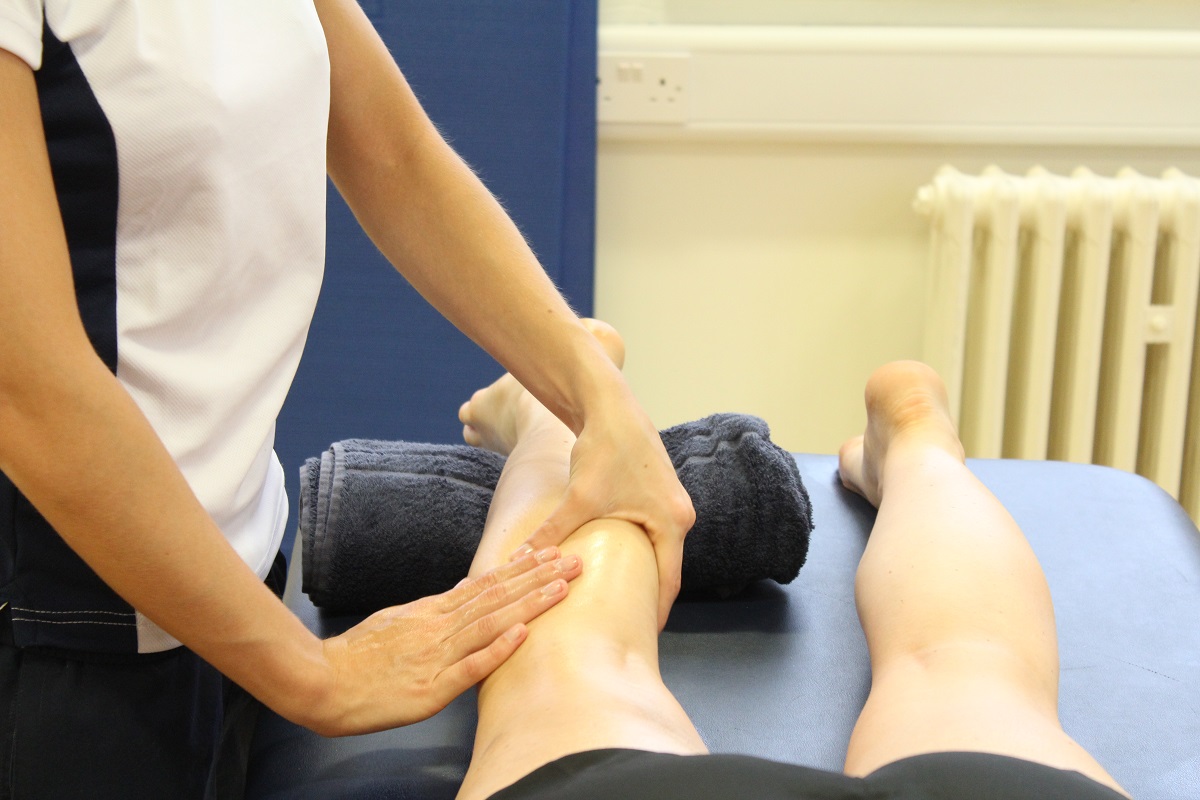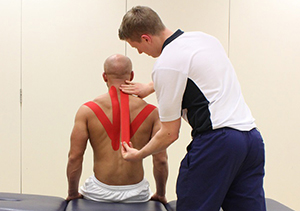Sacroiliac joint Dysfunction
The sacroiliac joints sit between the sacrum and the ilia, at the back of the pelvis, and there are several dysfunctions that can exist in this area causing pain.
 Above: Passive stretch of the muscles and connective tissues of the hip and pelvis by specialist therapist
Above: Passive stretch of the muscles and connective tissues of the hip and pelvis by specialist therapistWhat is Sacroiliac joint Dysfunction?
Sacroiliac Joint Dysfunction is an abnormality in the mechanics of the joint, which puts abnormal pressures on the joint surfaces, ligaments and surrounding muscles, causing pain. There are many different possible causes of the dysfunction due to the many different twisting forces applied to that area when moving the legs.
What causes Sacroiliac joint Dysfunction?
There are many causes of SI joint dysfunction which may include:
- Direct trauma such as a fall or a car crash.
- Mechanical imbalance, like a discrepancy in leg length.
- Repeated stress on the joint during various activities
- Inflammatory disorders such as Ankylosing Spondylitis.
- Hormones released during pregnancy allow ligaments holding the SI joints together to relax causing increased movement in the joints and can lead to increased stresses and abnormal wear.
 Above: Passive stretch of the muscles and connective tissues of the hip and pelvis by specialist therapist
Above: Passive stretch of the muscles and connective tissues of the hip and pelvis by specialist therapistWhat are the symptoms/effects of Sacroiliac joint Dysfunction?
Sacroiliac joint Dysfunction typically causes a dull aching pain at the base of the spine. The pain can vary from an ache to being sharp in nature with certain movements such as bending, lifting or rolling over in bed. Sometimes there is referred pain in the groin, buttock or the back of the thigh, but this referred pain will rarely go below the knee.
 Above: Progressive strengthening hip exercises supervised by experienced therapist
Above: Progressive strengthening hip exercises supervised by experienced therapistDiagnosis of Sacroiliac joint Dysfunction
A thorough history and physical examination by a doctor or physiotherapist will confirm a diagnosis of Sacroiliac joint dysfunction.
Physiotherapy Treatment for Sacroiliac joint Dysfunction
A person with Sacroiliac joint Dysfunction will benefit from physiotherapy treatment.
Pain in the SI joint is often related to either too much movement or not enough movement in the joint. An initial assessment with one of our experienced physiotherapist will identify the underlying cause of your pain and a treatment plan will then be developed accordingly.
Your physiotherapist at Manchester Physio will use hands-on techniques and teach you various exercises to reduce the pain and get you back to your everyday activities as quickly and as safely as possible.
Physiotherapy treatment at Manchester Physio will depend you current symptoms and lifestyle but may include:
- Advice about how to stay as active as possible while you are recovering
- Hot and cold therapy
- Joint mobilisation or manipulation
- Stretching and stabilising exercises to increase muscle strength and length in your spinal and abdominal muscles
- Soft tissue massage
- Advice on a sacroiliac belt to help stabilise the SI joints
- Advice about orthotics if a discrepancy in leg length is the cause of the dysfunction
 Above: Stretch of the muscles and connective tissues of the hip and pelvis.
Above: Stretch of the muscles and connective tissues of the hip and pelvis.At Manchester Physio you will be supported throughout your rehabilitation program to ensure you make the best possible recovery.
For more information on physiotherapy for pelvic problems, or to book an appointment please call 0161 883 0077.



 0161 883 0077
0161 883 0077














































 f
f






